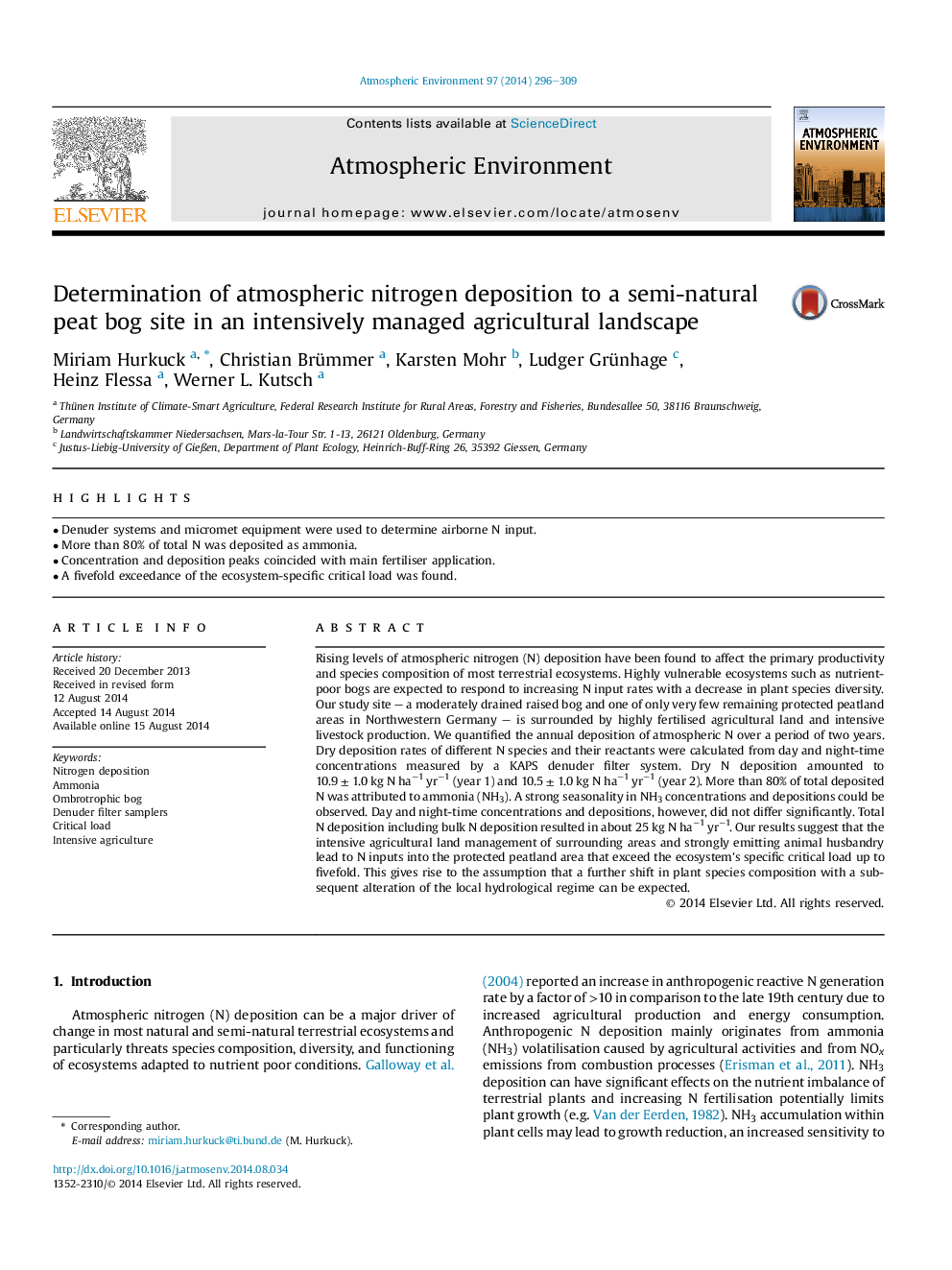| Article ID | Journal | Published Year | Pages | File Type |
|---|---|---|---|---|
| 6339803 | Atmospheric Environment | 2014 | 14 Pages |
â¢Denuder systems and micromet equipment were used to determine airborne N input.â¢More than 80% of total N was deposited as ammonia.â¢Concentration and deposition peaks coincided with main fertiliser application.â¢A fivefold exceedance of the ecosystem-specific critical load was found.
Rising levels of atmospheric nitrogen (N) deposition have been found to affect the primary productivity and species composition of most terrestrial ecosystems. Highly vulnerable ecosystems such as nutrient-poor bogs are expected to respond to increasing N input rates with a decrease in plant species diversity. Our study site - a moderately drained raised bog and one of only very few remaining protected peatland areas in Northwestern Germany - is surrounded by highly fertilised agricultural land and intensive livestock production. We quantified the annual deposition of atmospheric N over a period of two years. Dry deposition rates of different N species and their reactants were calculated from day and night-time concentrations measured by a KAPS denuder filter system. Dry N deposition amounted to 10.9 ± 1.0 kg N haâ1 yrâ1 (year 1) and 10.5 ± 1.0 kg N haâ1 yrâ1 (year 2). More than 80% of total deposited N was attributed to ammonia (NH3). A strong seasonality in NH3 concentrations and depositions could be observed. Day and night-time concentrations and depositions, however, did not differ significantly. Total N deposition including bulk N deposition resulted in about 25 kg N haâ1 yrâ1. Our results suggest that the intensive agricultural land management of surrounding areas and strongly emitting animal husbandry lead to N inputs into the protected peatland area that exceed the ecosystem's specific critical load up to fivefold. This gives rise to the assumption that a further shift in plant species composition with a subsequent alteration of the local hydrological regime can be expected.
